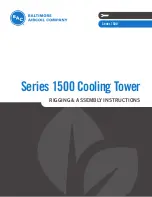
2.
Pumping type
Make sure that all the tubes of indoor and outdoor unit are connecting well.
Take off valve bonnet from two-way and three-way valves by spanner; connect vacuum pump and compound
valve to the service valve bonnet.
Open the low-pressure switch of compound valve, and run vacuum pump until units’ internal pressure at 10
mmHg.
After pump vacuum, close the low-pressure switch of compound valve, and then close vacuum pump. Turn anti-
clockwise 90° spool of narrow pipe service valve by hexagon spanner, tightly with clockwise turning after
stopping for 10 seconds.
Check with soap water or leak detector whether there is leakage at all connections of indoor and outdoor unit.
Open wide and narrow pipe service valves by hexagon spanner for running.
Take off the connection pipeline of wide pipe service valve.
Screw tightly the entire valve bonnet by torque spanner.
Check with soap water or leak detector whether there are leakage at all indoor and outdoors’ connections.
Put the valve bonnet and lid back to position.
TIPS:
Use the R32 refrigerant special vacuum pump.
Use tools for R32 (such as the gauge manifold, charging hose, or vacuum pump adapter.)
Gas
leakage
inspection
After the pipeline connection is done, use a leakage inspection device or soap to carefully chec if there is any leakage at
the joints.This is an important step to ensure the quality of installation. If refrigerant gas leaks, ventilate the area
immediately. Toxic gas may be produced if refrigerant gas comes into contact with fire.Never directly touch any
accidentally leaking refrigerant. This could result in severe wounds caused by frostbite.
Drainage
1. No need drainage treatment
In regions where become cold in the winter, don't install the drain
elbow joint to prevent drain water from freezing and causing the fan
to be damaged. This drainage treatment is not necessary for
cooling-only type air conditioner.
2. When need drainage treatment
Please use drain elbow joint (in accessory bag). Outdoor unit
should be placed on blocks.




































